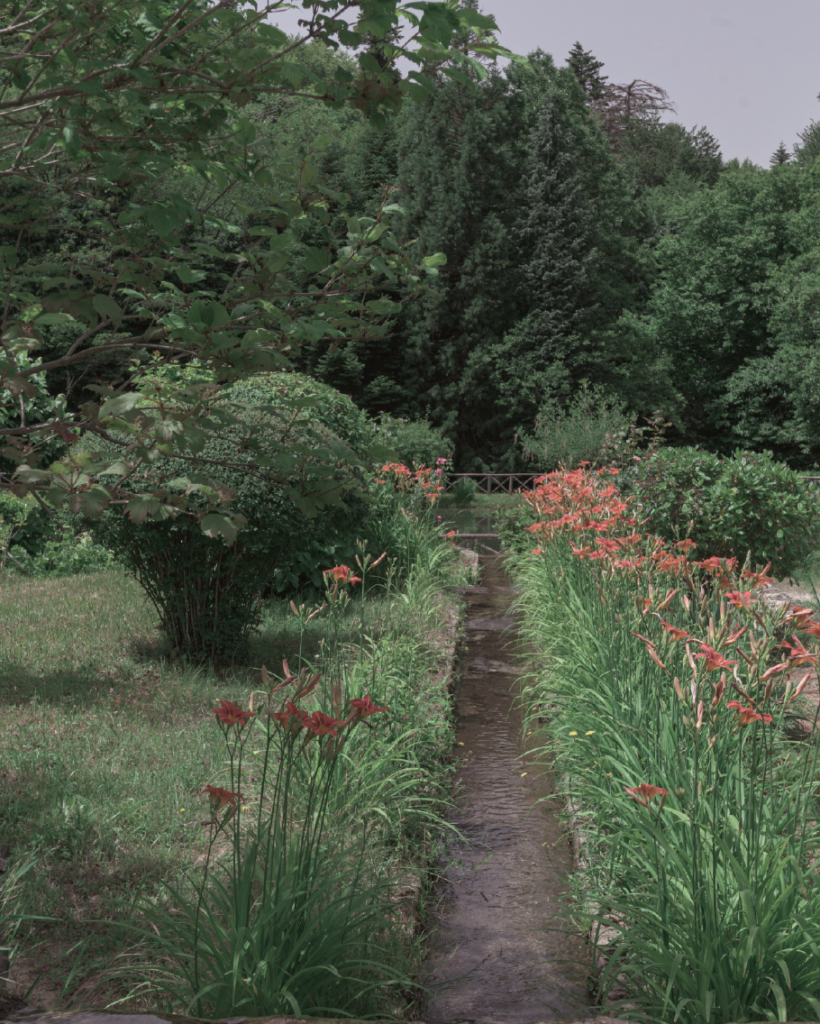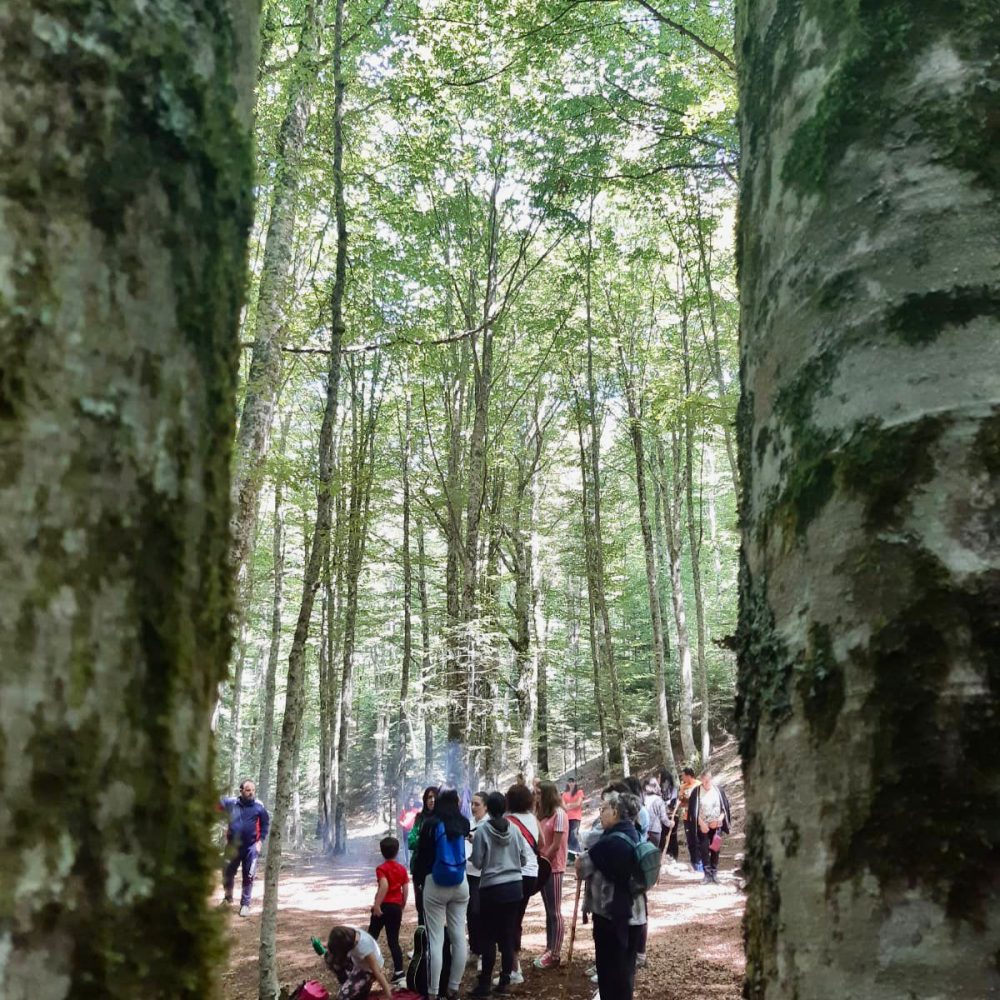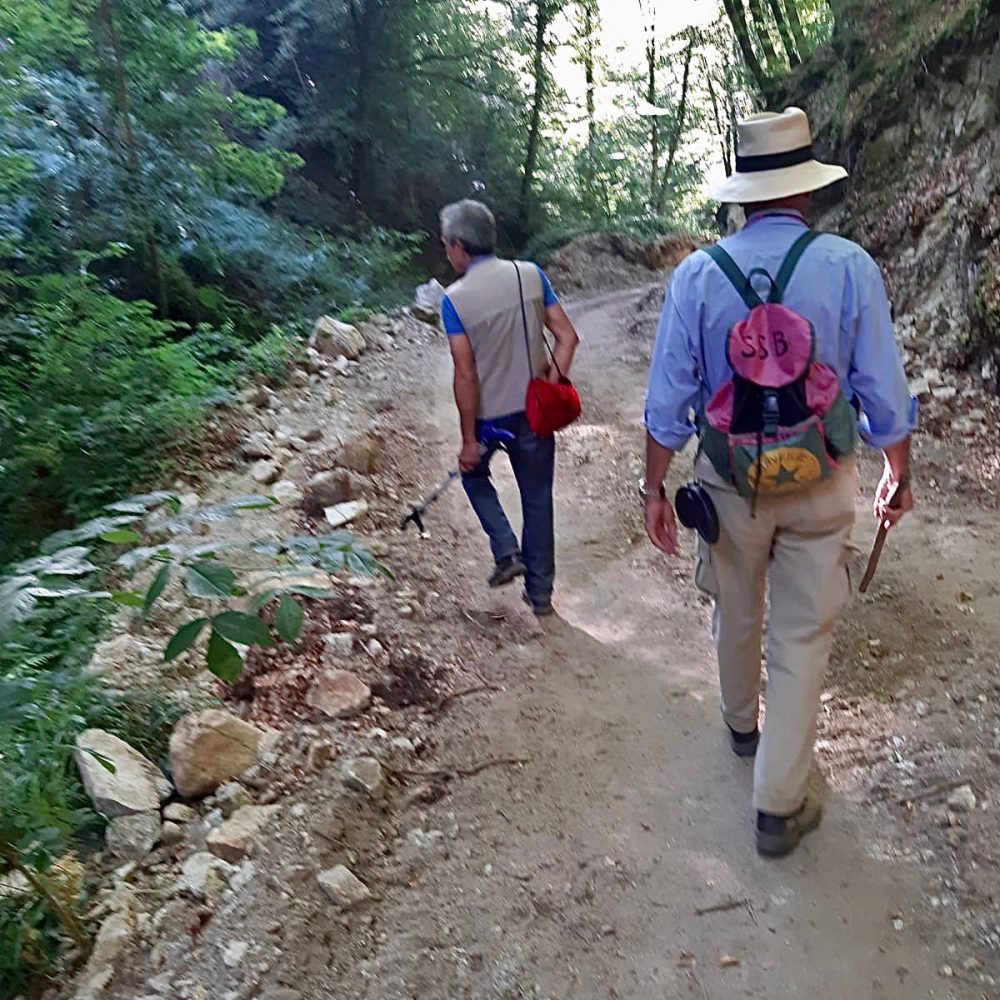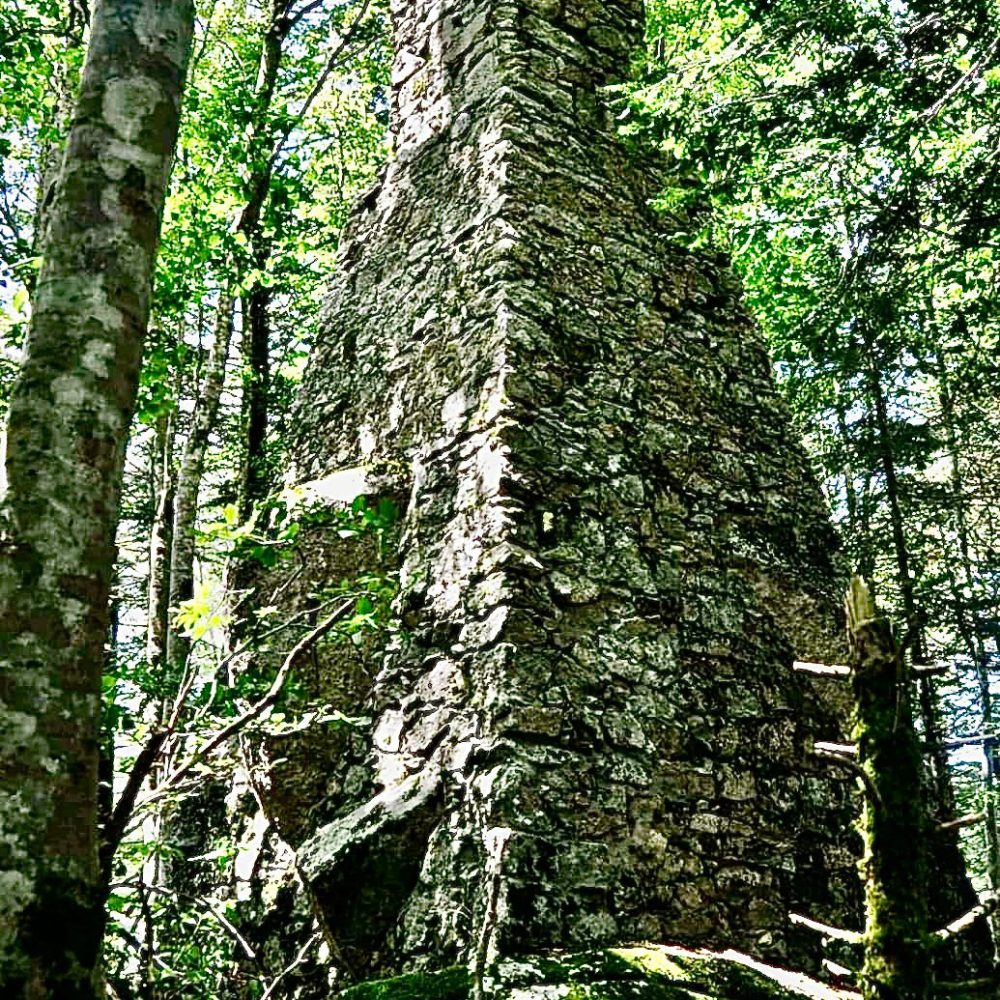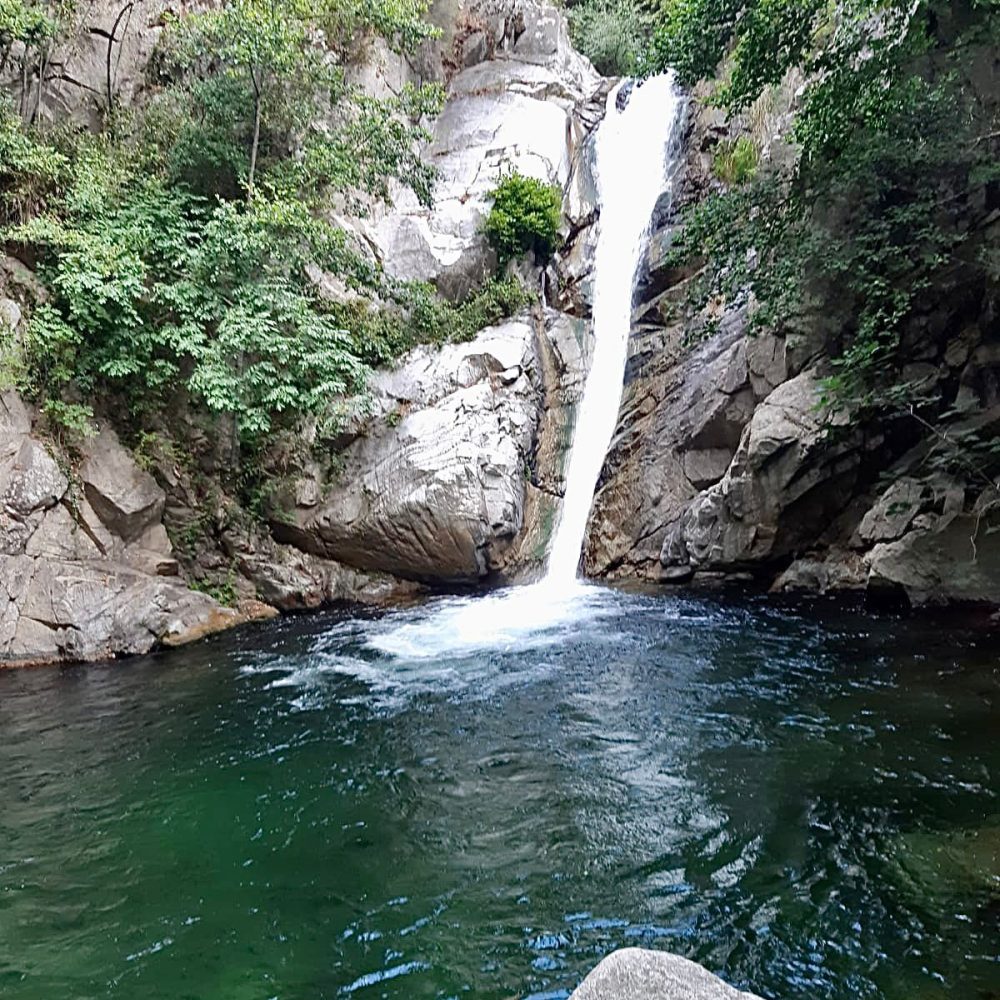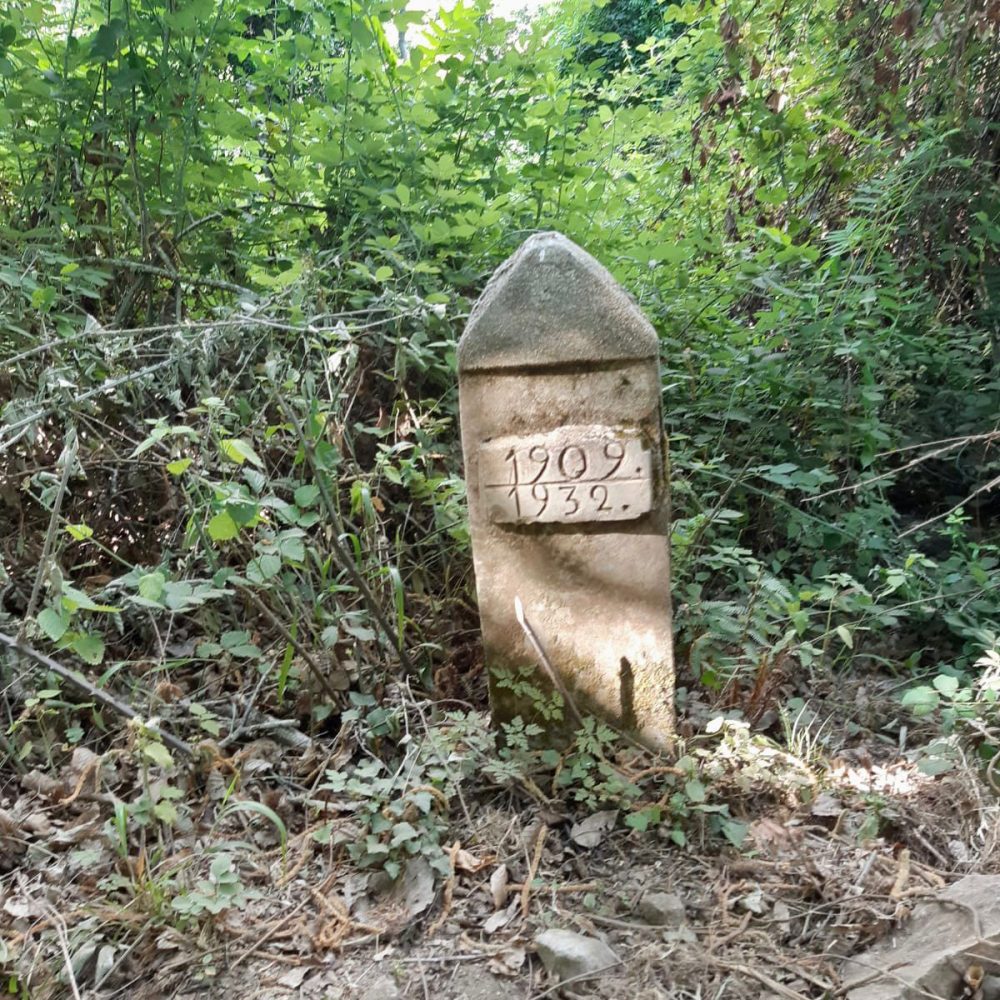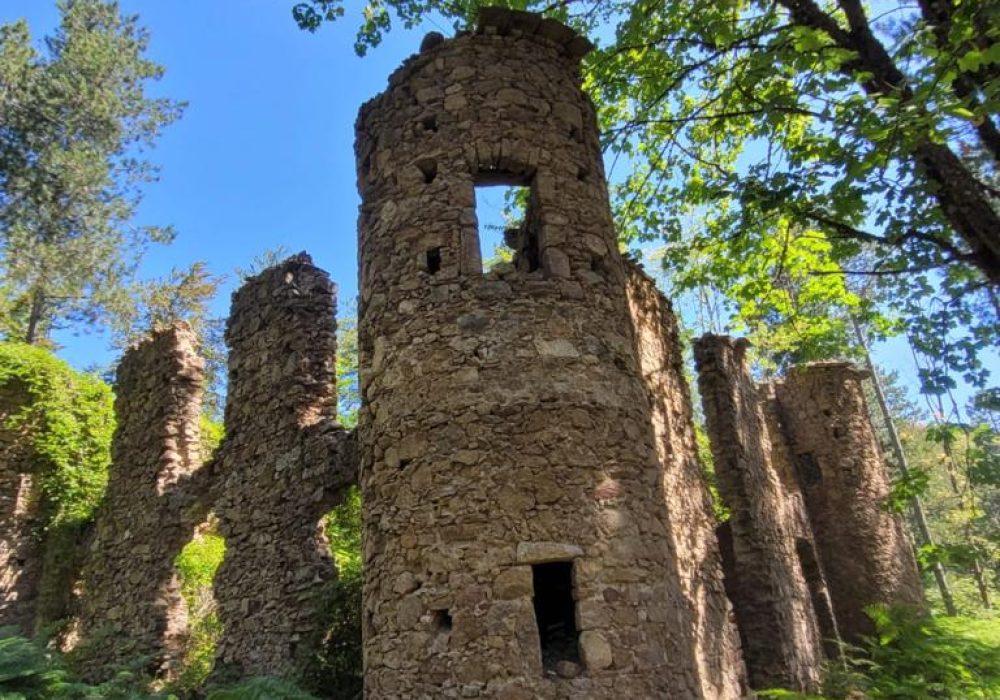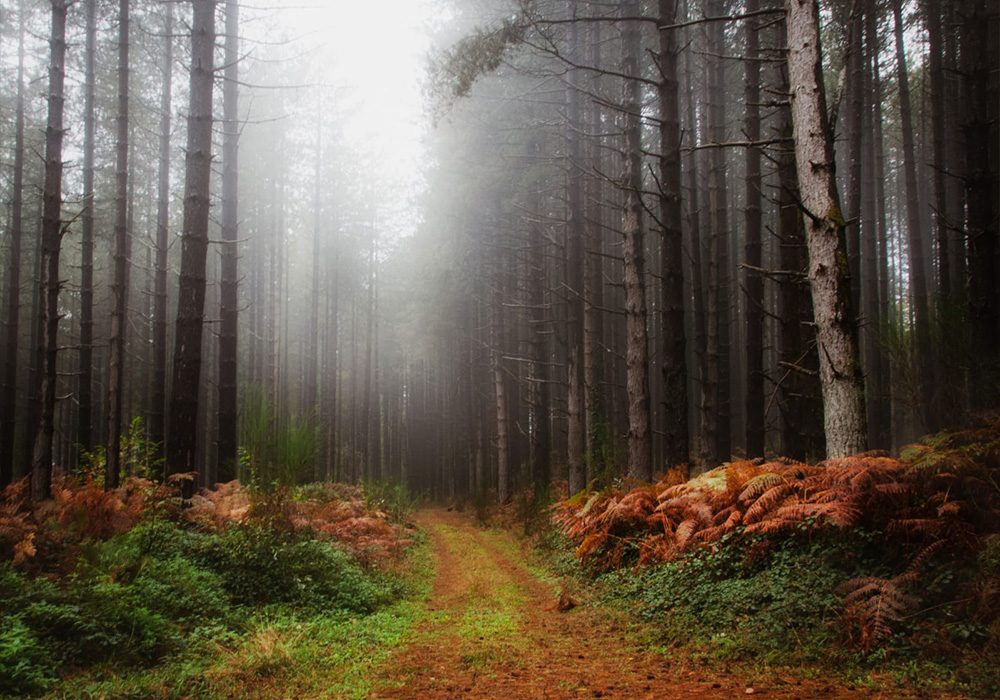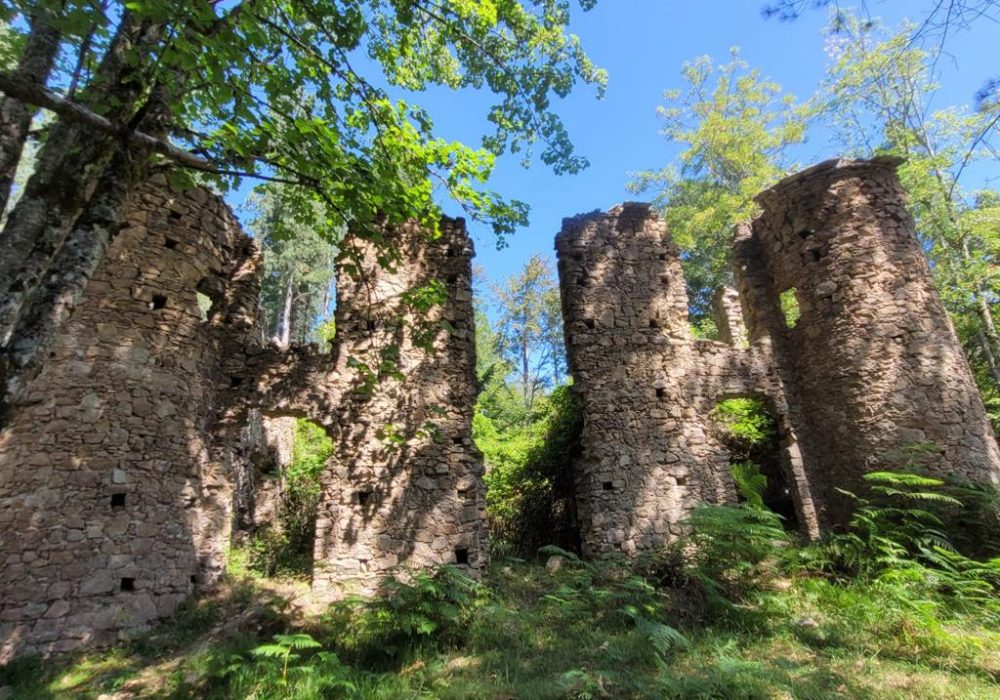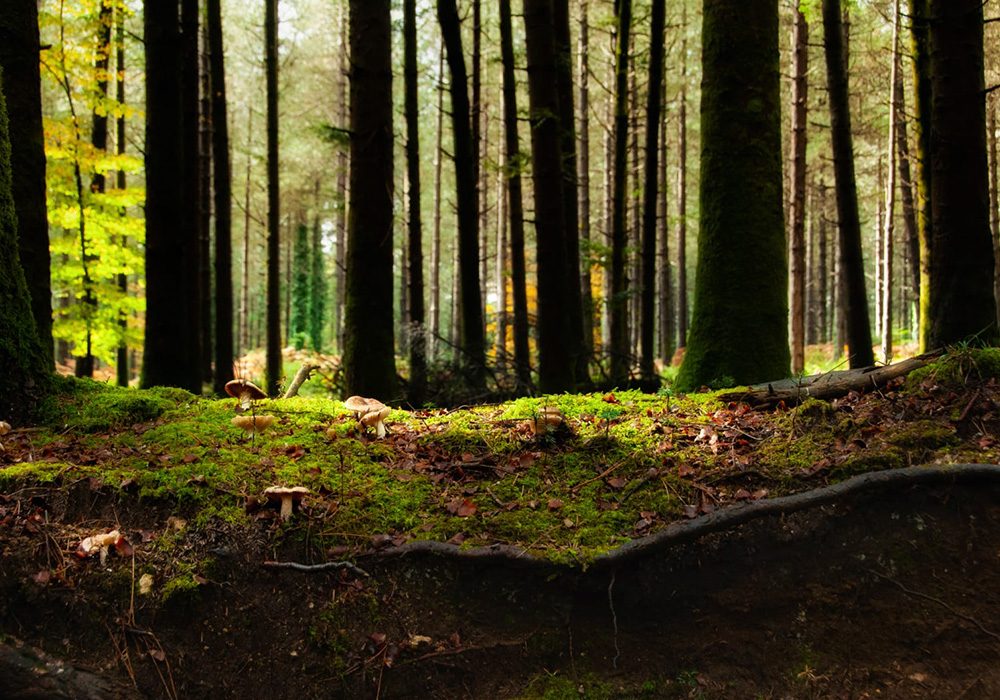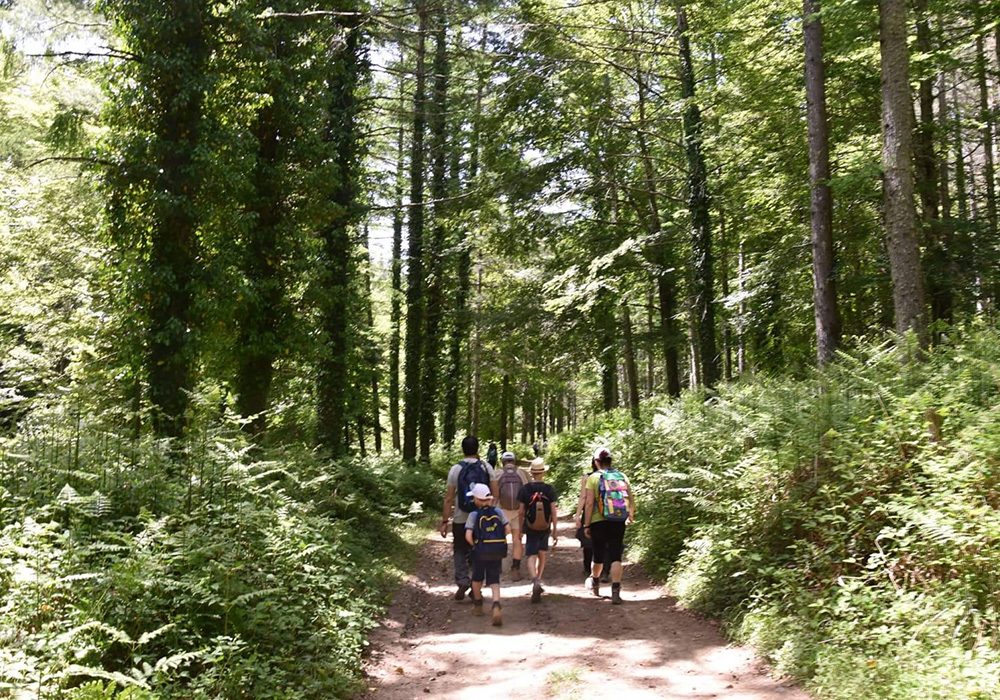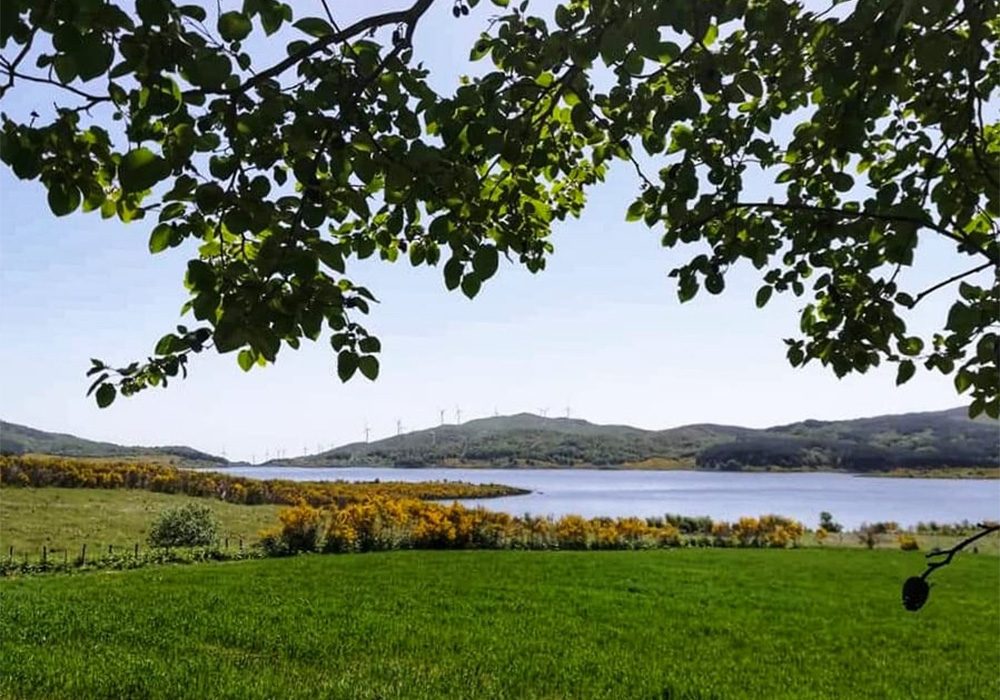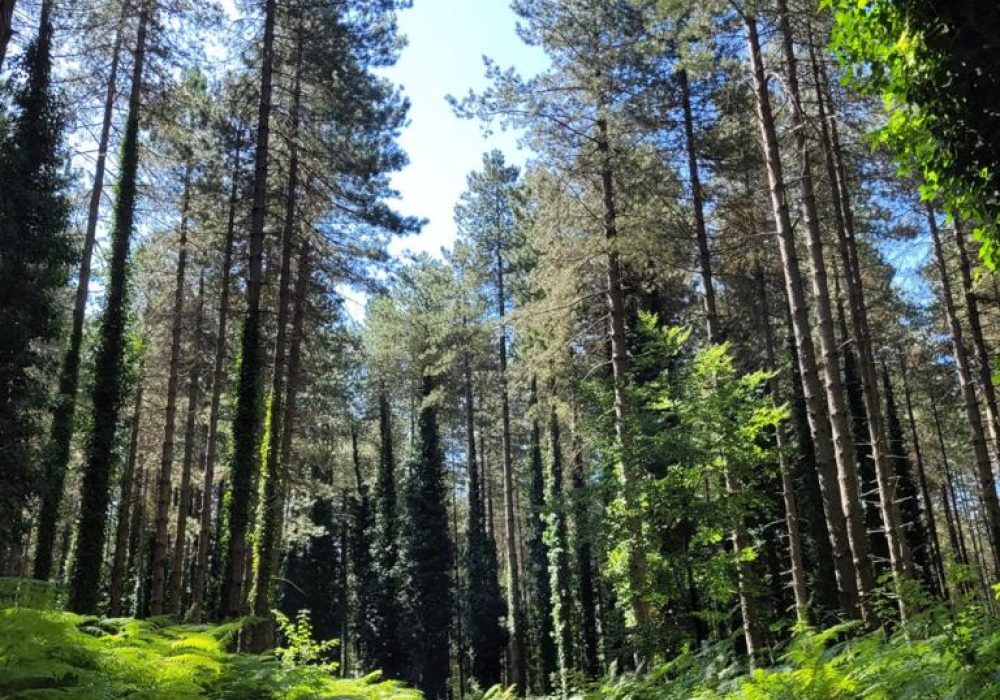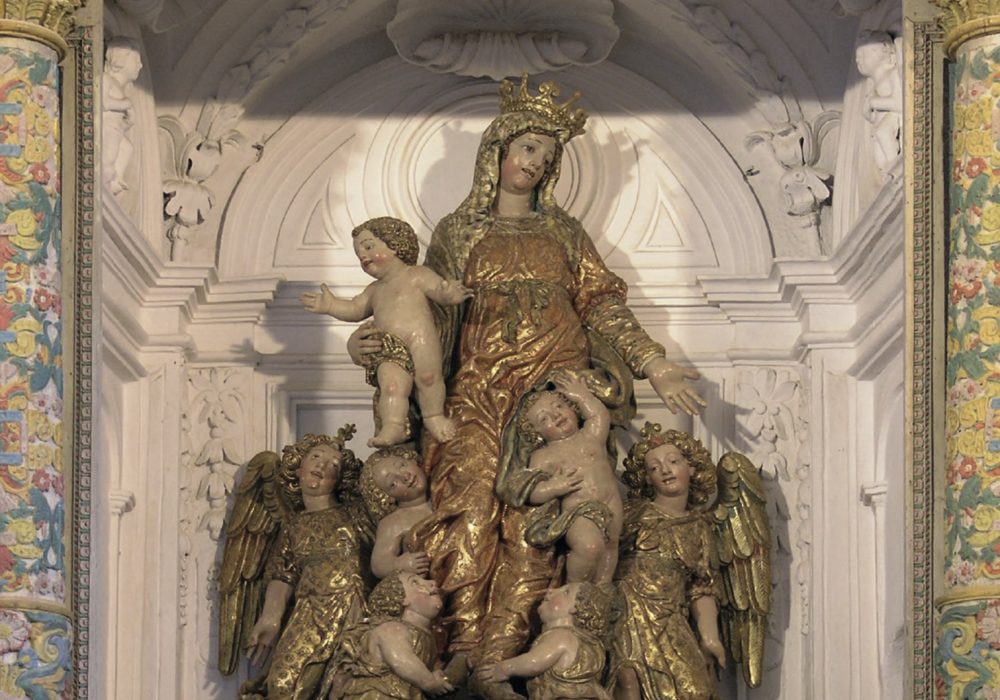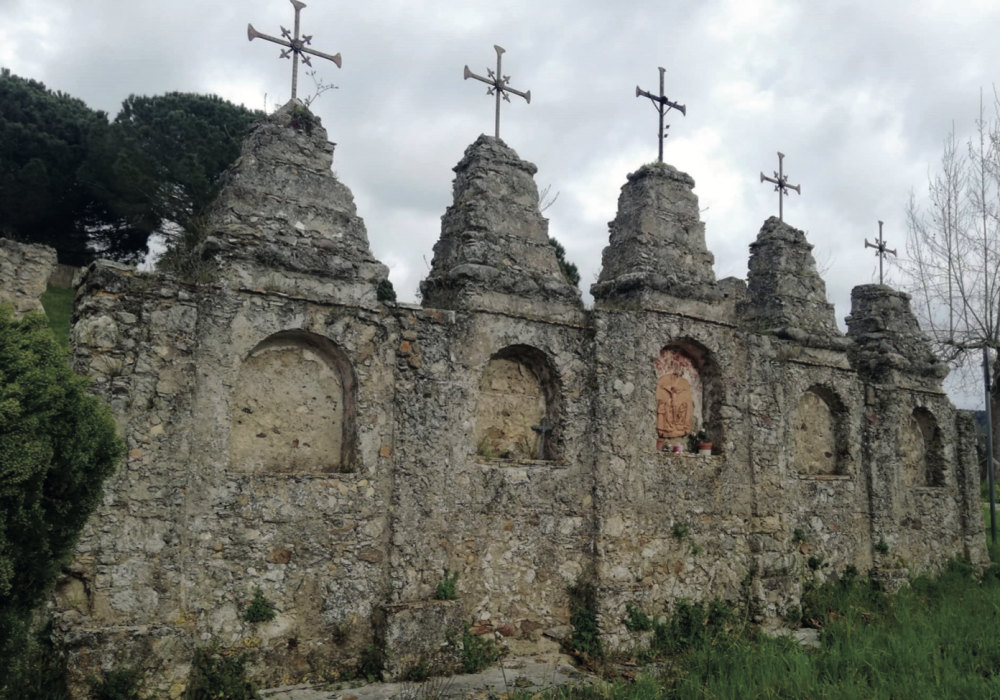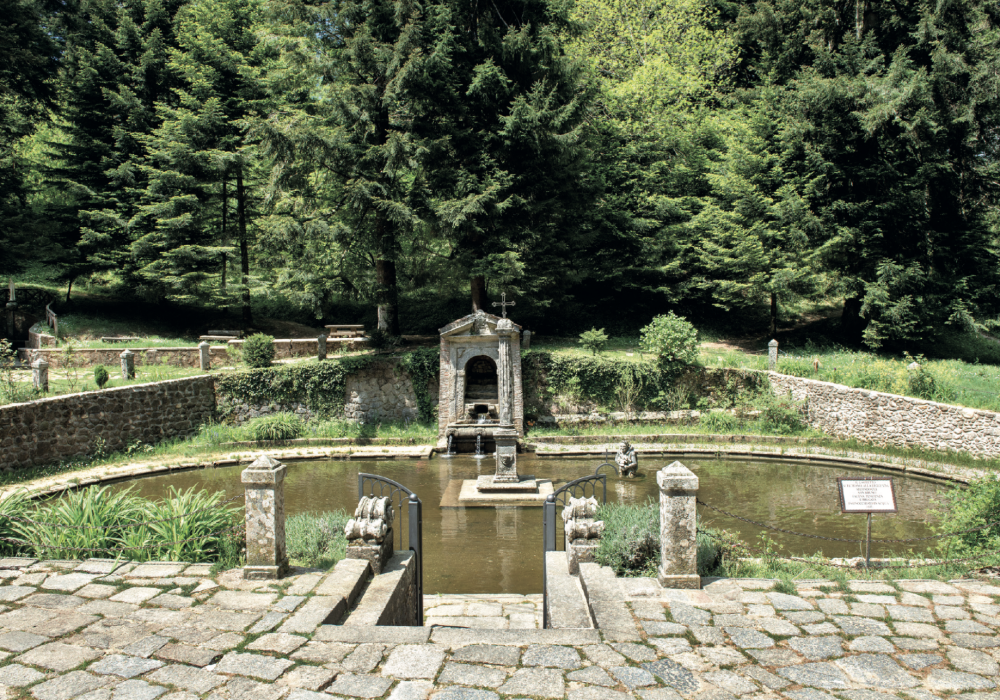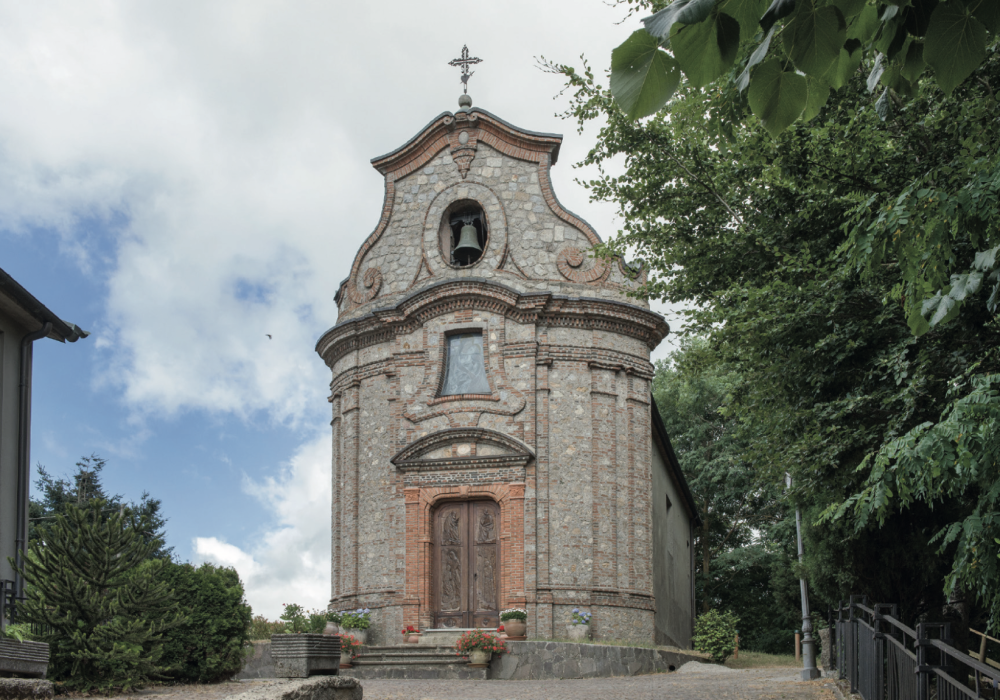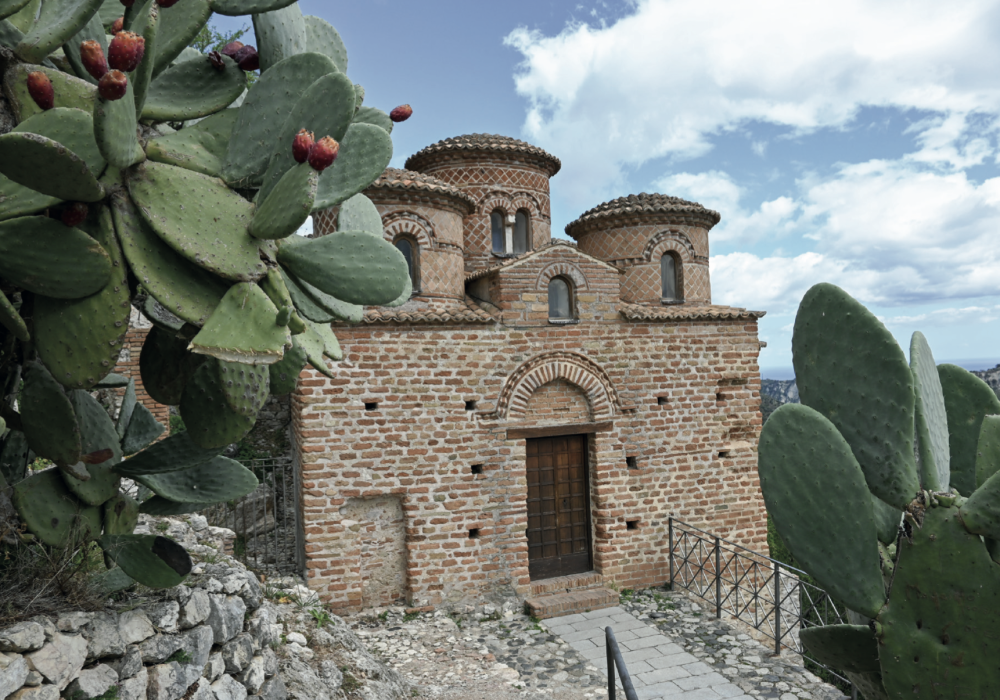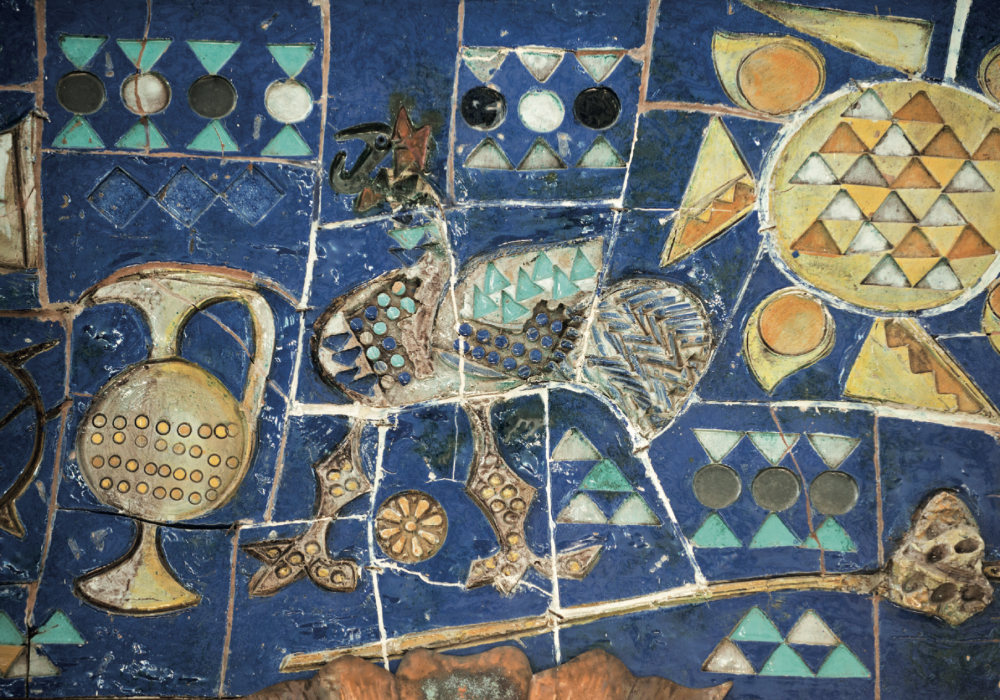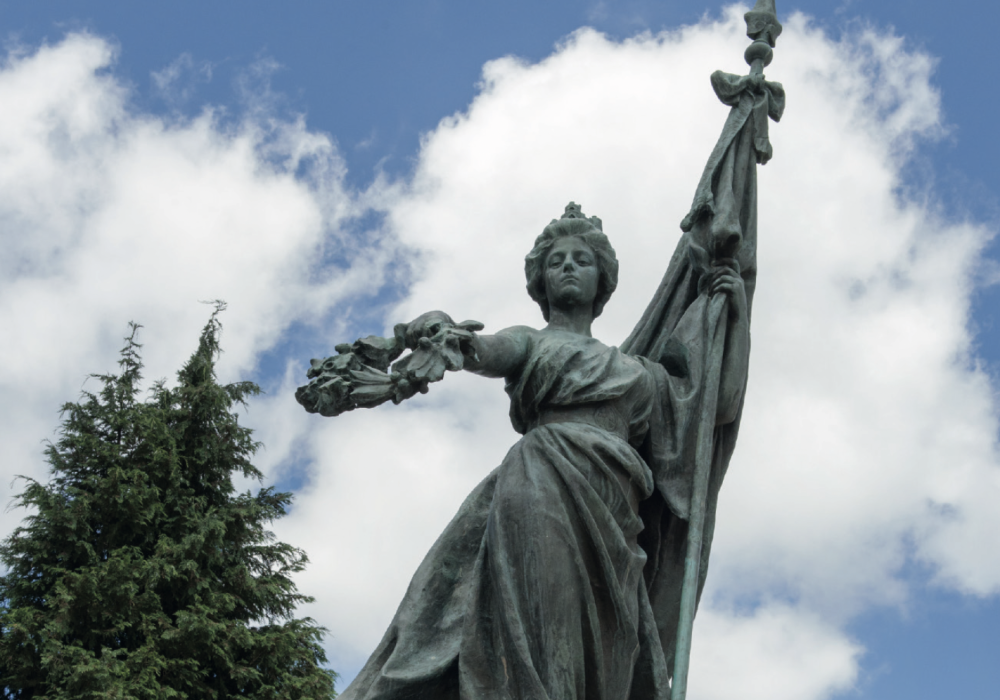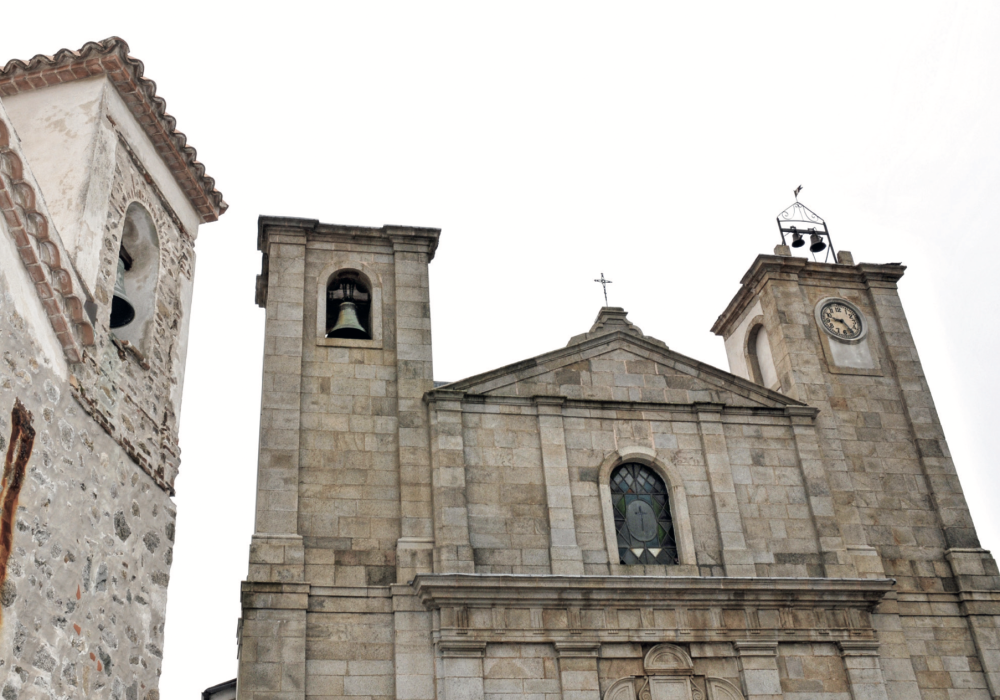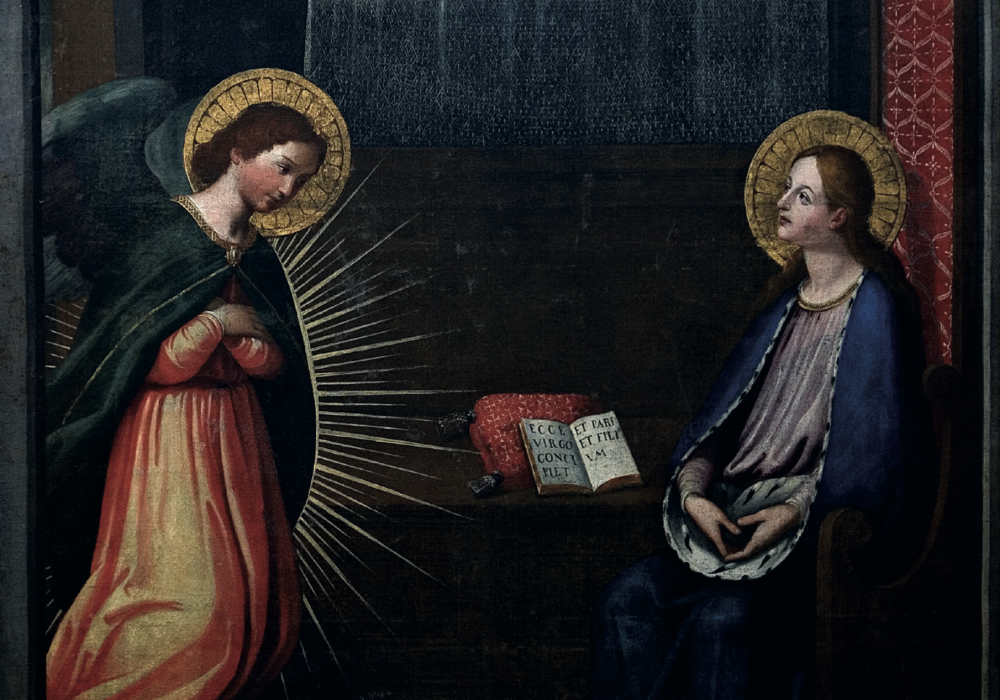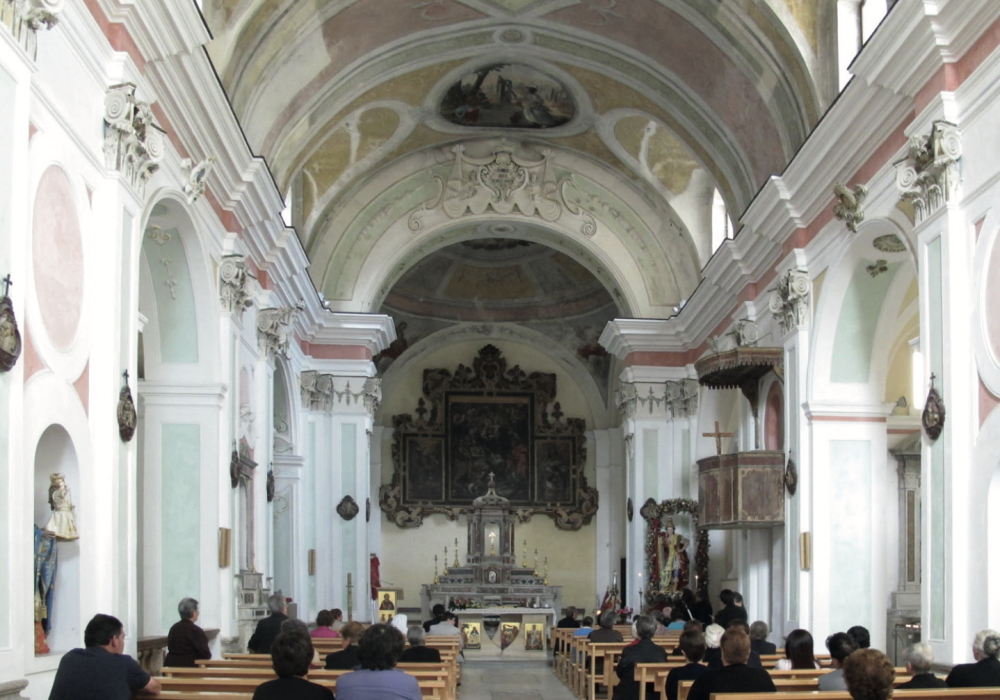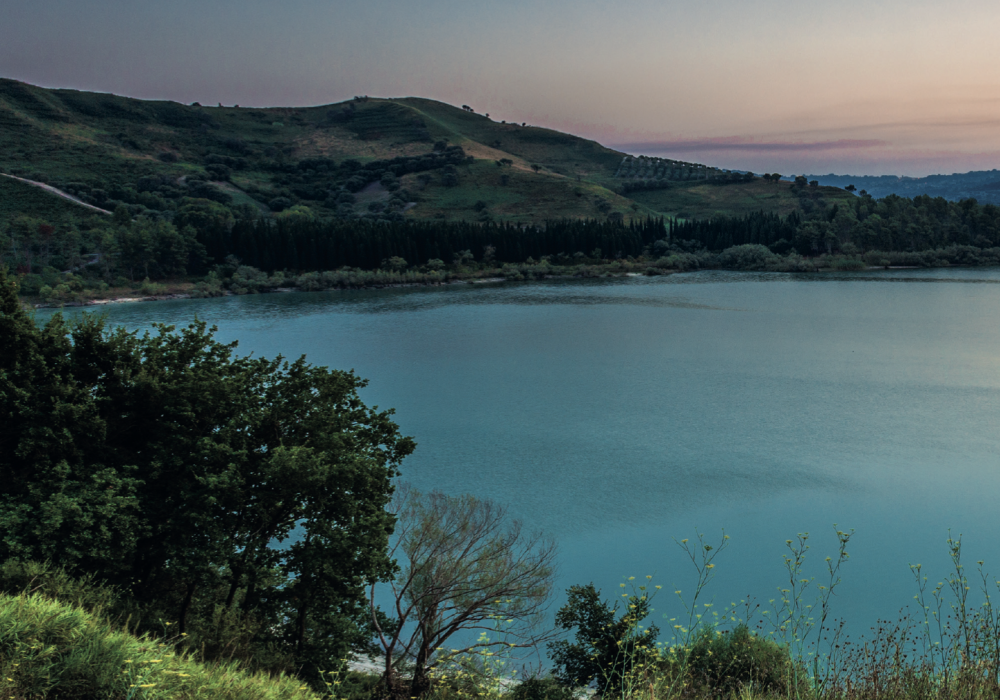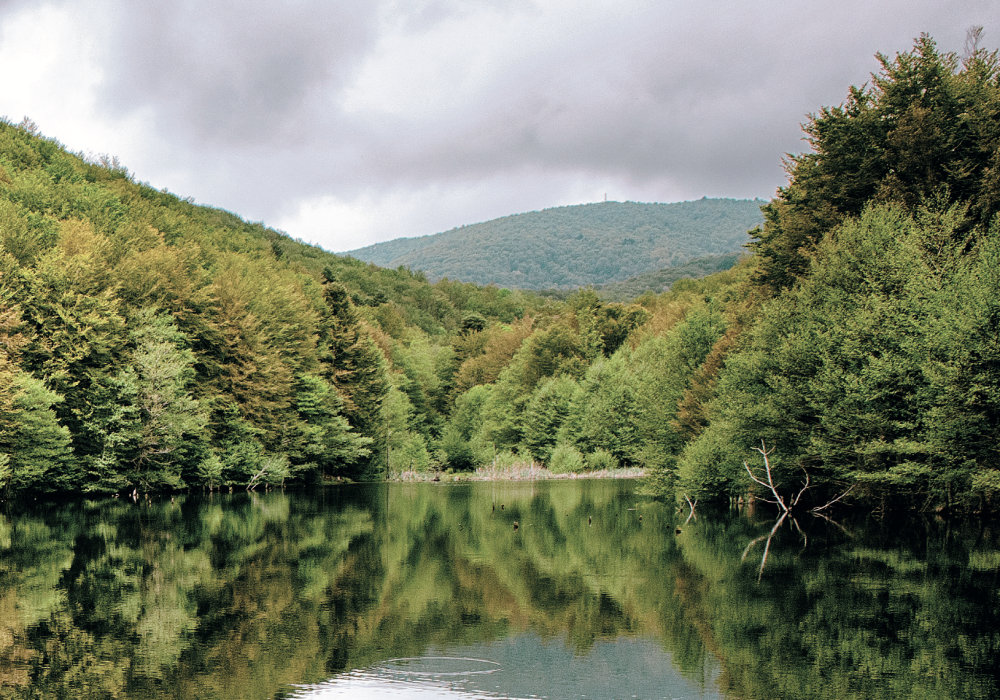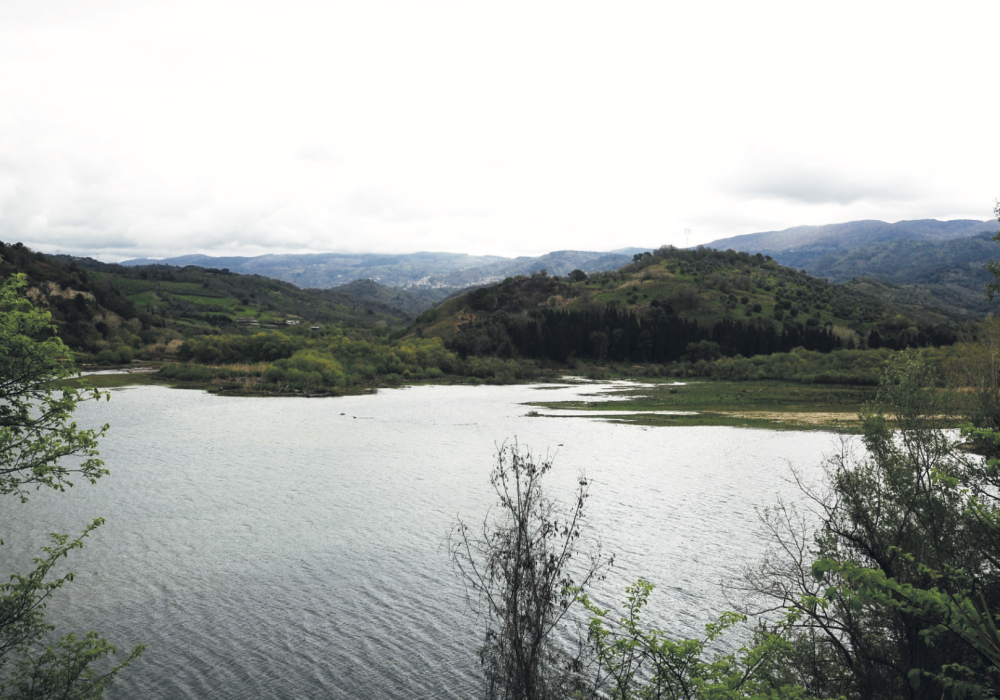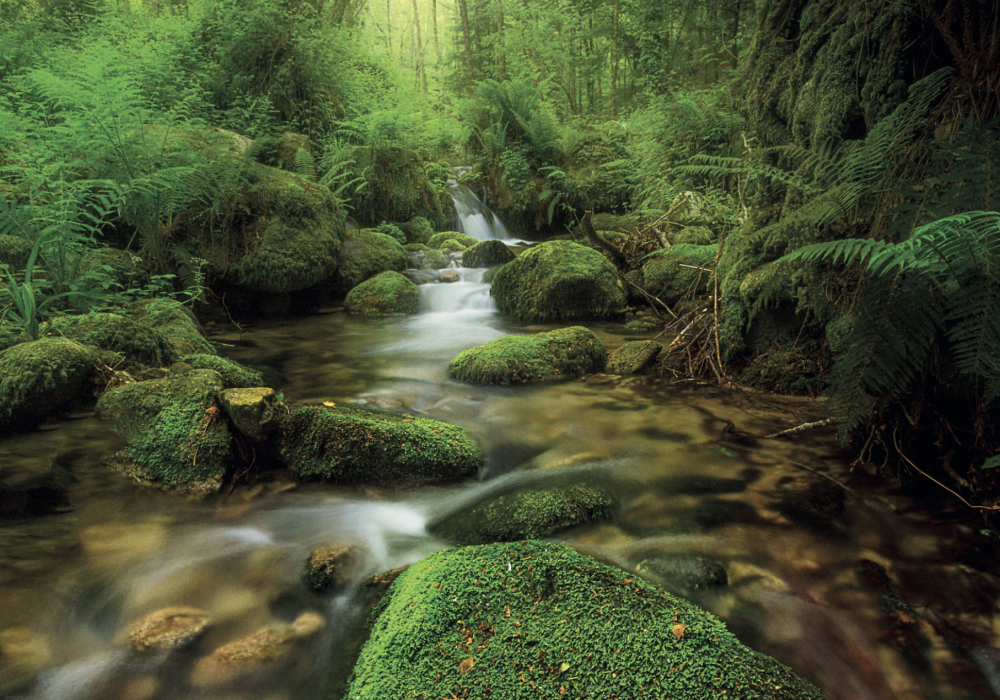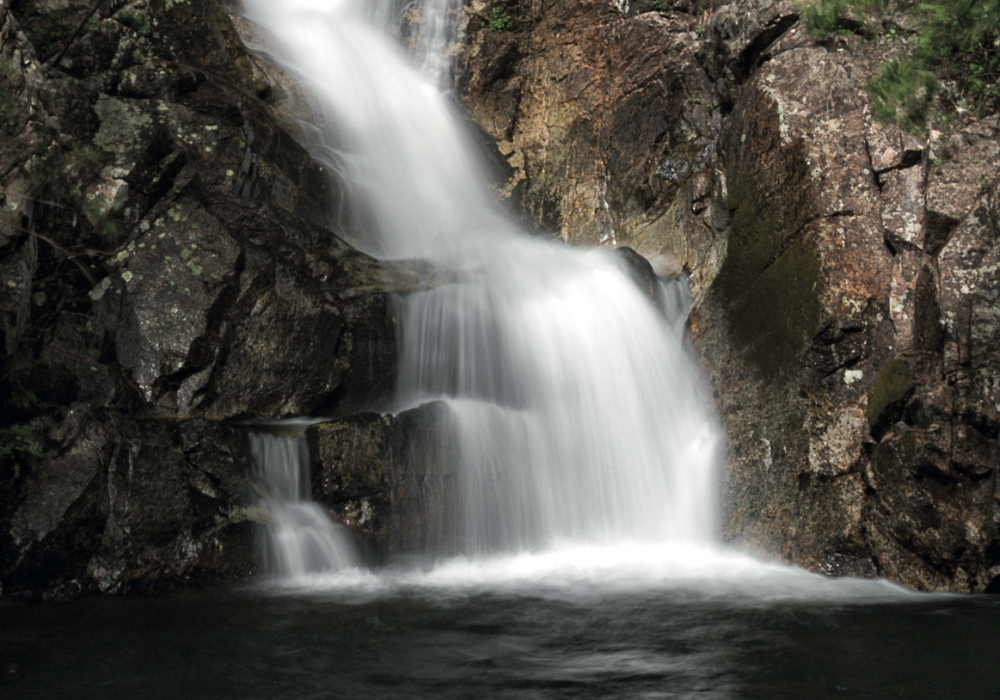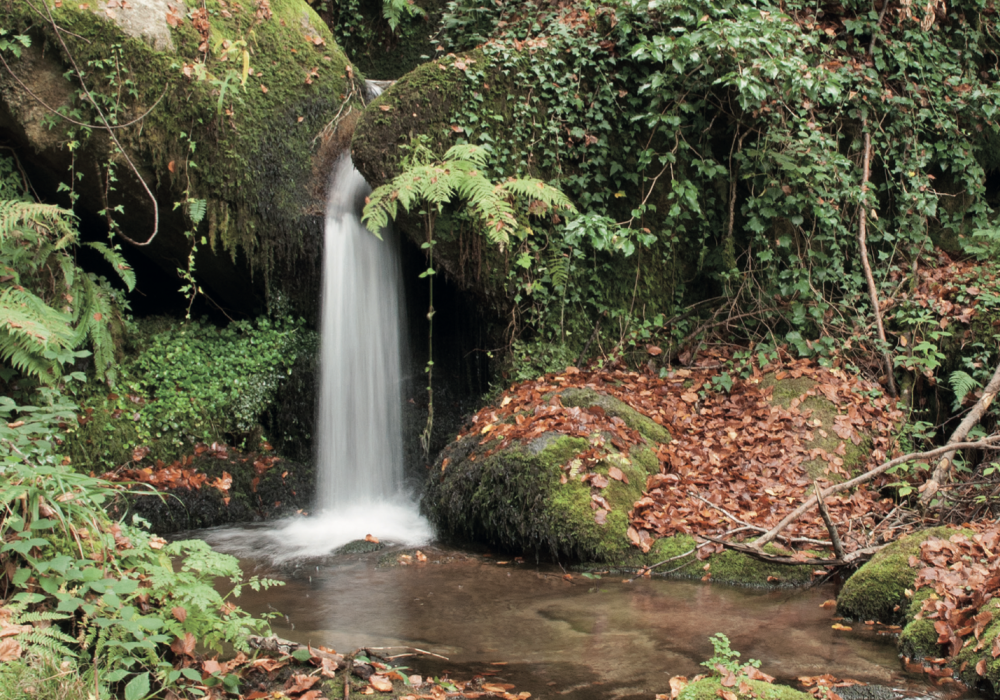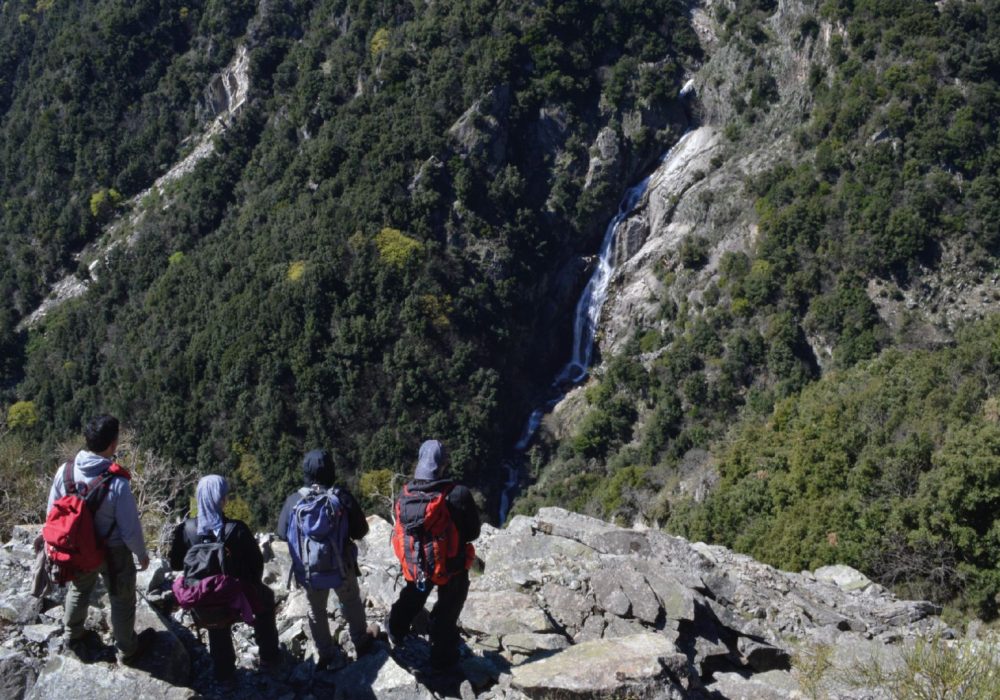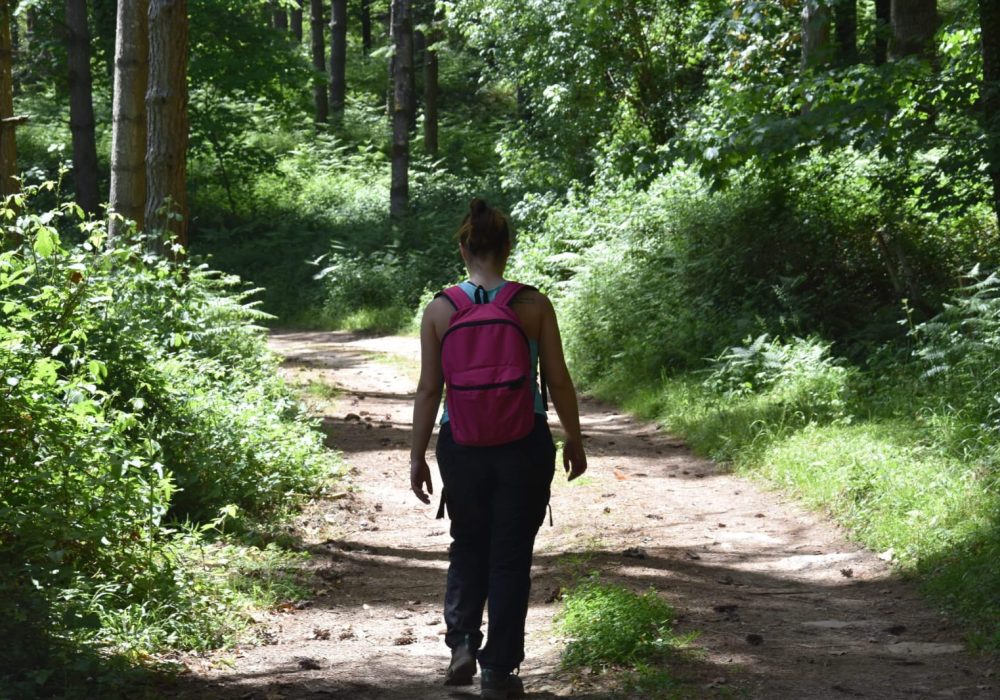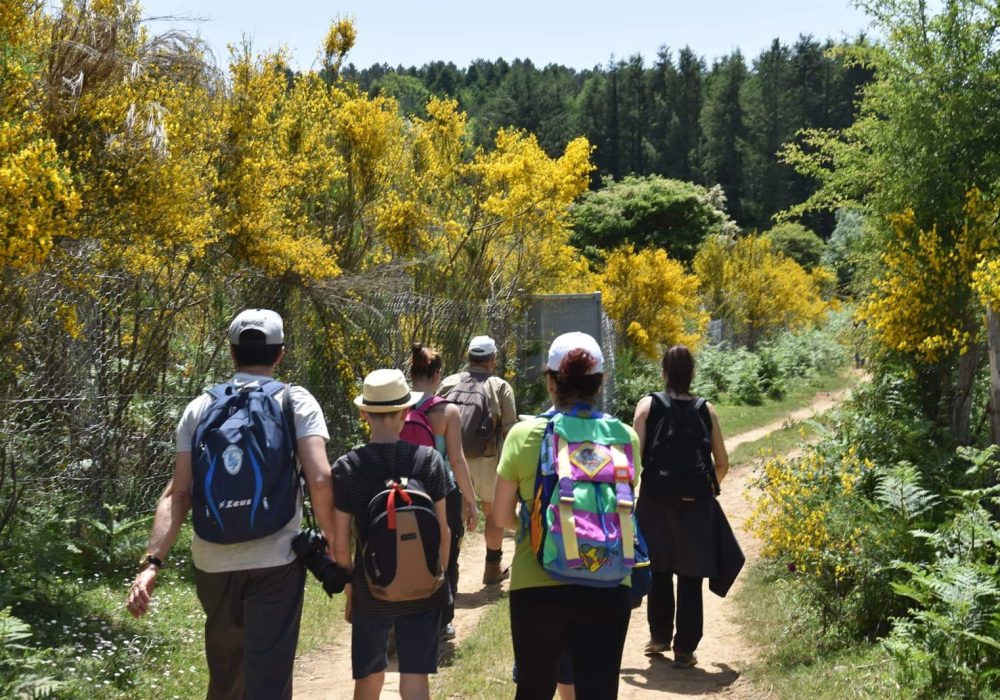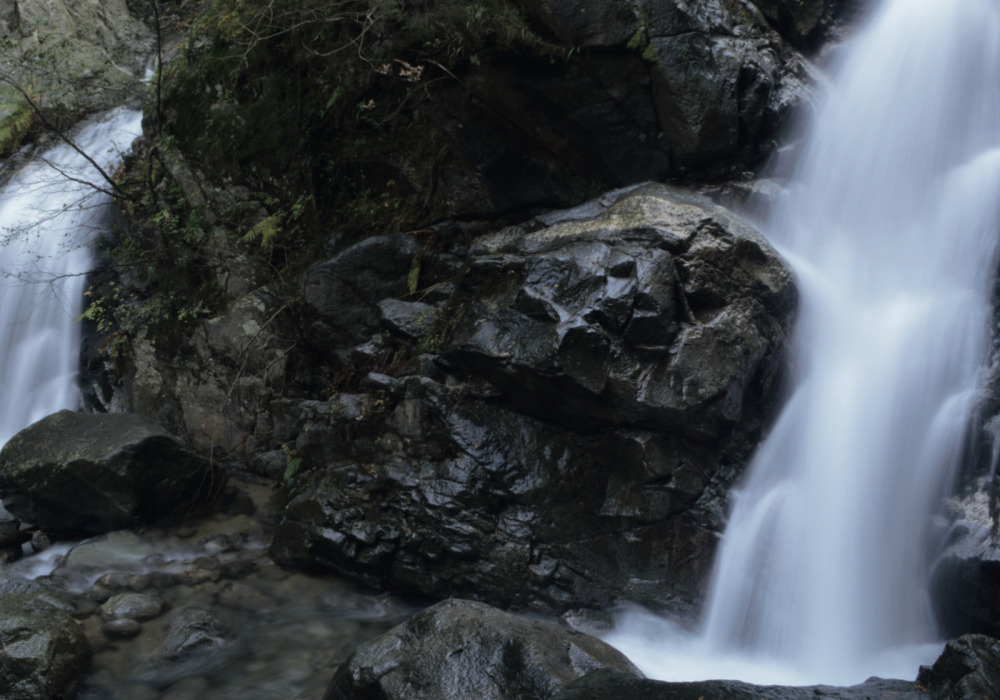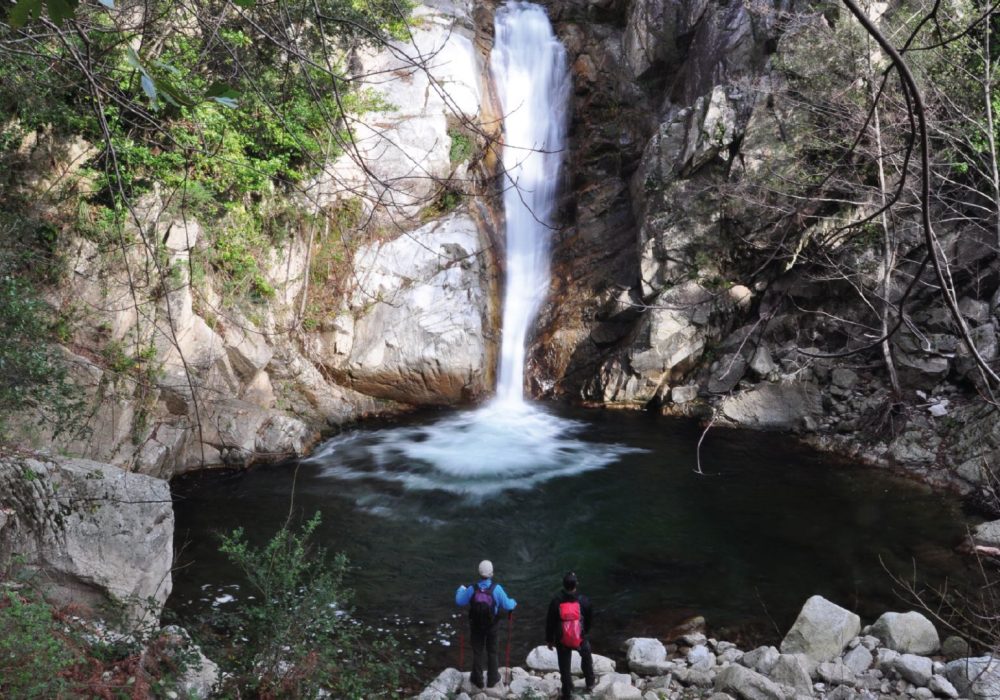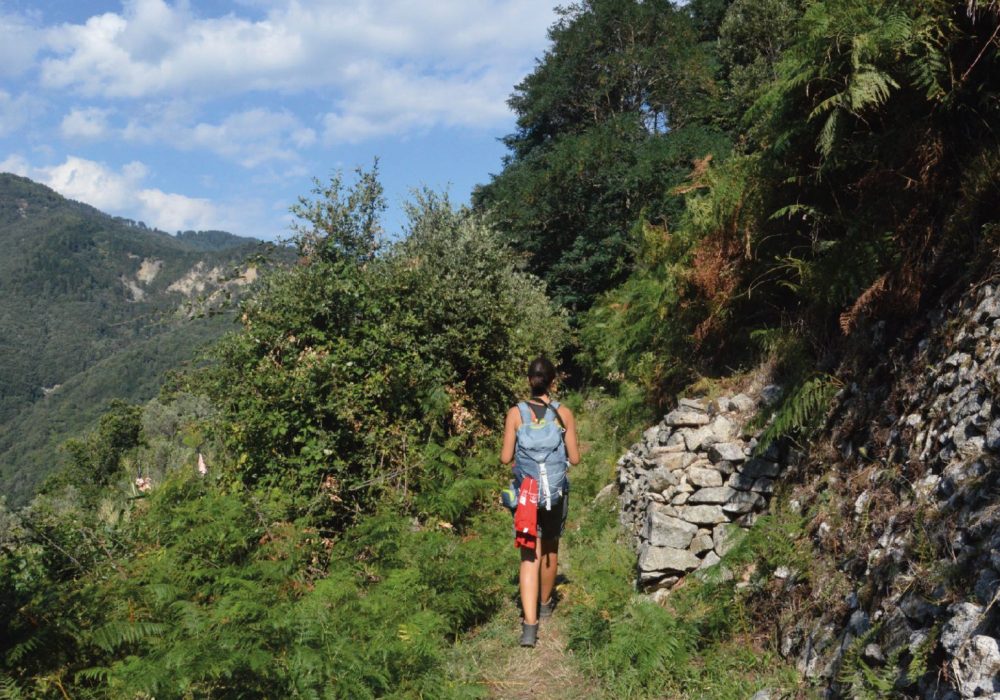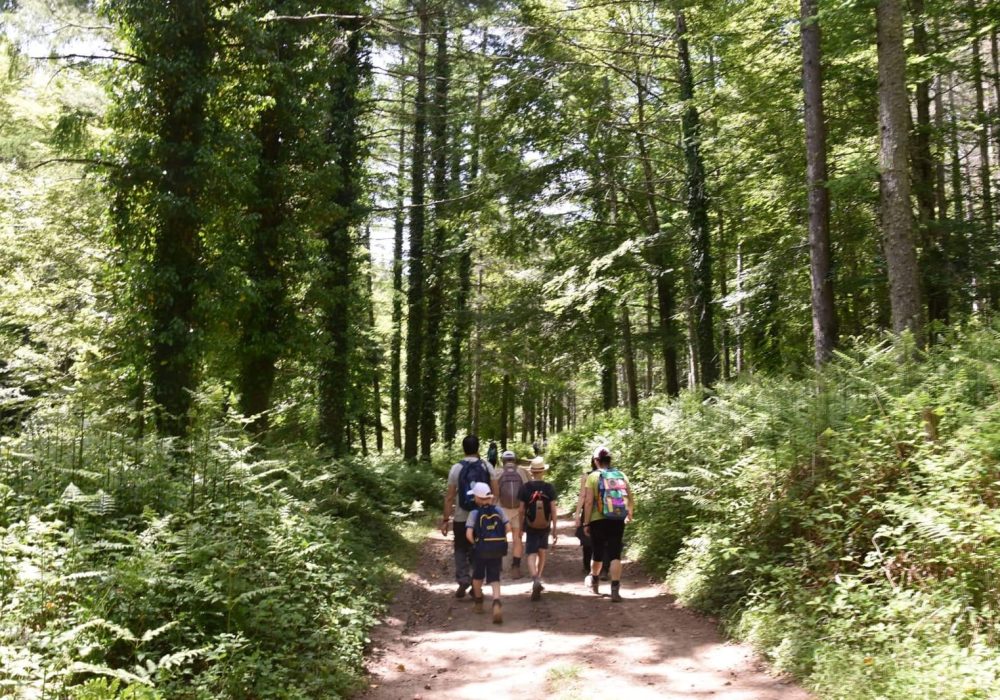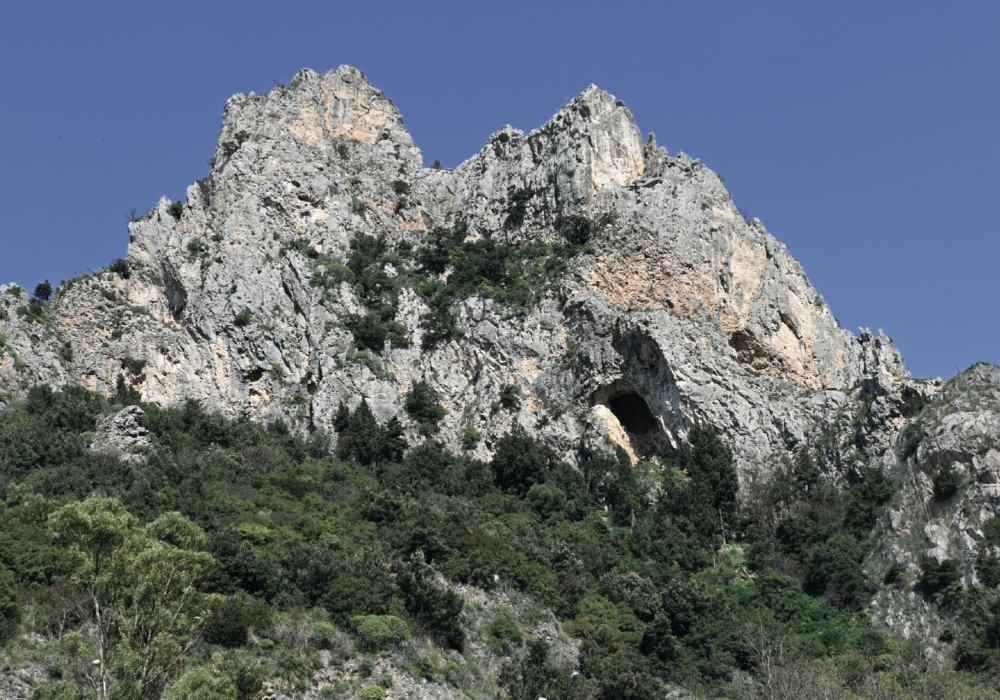Archiforo Trail
The path, located south-east of the town of Serra San Bruno, will allow us to immerse ourselves in a beautiful and evocative mixed forest of silver fir and beech, to admire rare species and to encounter testimonies of historical memory along the way.
Path Info
MUNICIPALITIES: Serra San Bruno (VV)
START: Parcheggio presso orto botanico Rosarella, Serra San Bruno (VV)
END: Entrata nord-ovest orto botanico Rosarella, Serra San Bruno (VV)
TIME: 2 hours
DISTANCE: 4 Km
DIFFERENCE IN ALTITUDE: 224 m
MAXIMUM QUOTE: 1.094 m
MINIMUM QUOTE: 870 m
DIFFICULTY: medium
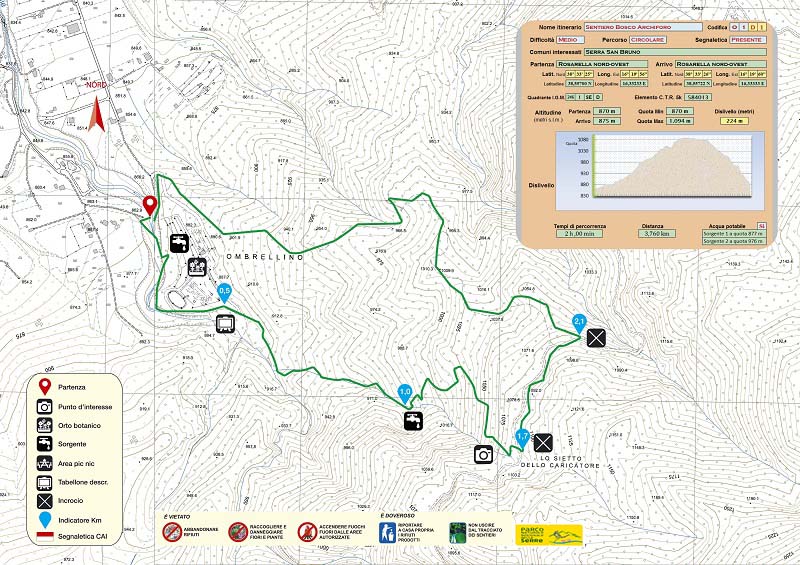
Description
The route starts from the clearing below the nursery in the ‘Rosarella’ locality and reaches ‘Pietra del Signore’, a place characterised by the presence of a granite batolith, and then returns along a stretch of dirt road.
Once in Serra San Bruno we continue along the former SS 110 towards Mongiana, taking Via San Brunone, shortly afterwards. Via Cartesio and then Via Foibe, which will take us to “Rosarella”. We climb along the fence of the ‘Rosarella’ nursery until we reach the entrance to the Archiforo forest, marked by an information board. We now follow a picturesque stretch along a canal that will accompany us along with the stream, on our right, with the soothing murmur of the water that often forms small jumps. The path begins to climb among majestic beech and fir trees. The atmosphere is atmospheric.
The path through the forest is marked and beaten, recognisable by the presence of some structures such as fences and footbridges. We reach a point marked by a small waterfall, a bridge and the reconstruction of a charcoal pile. Here a spring will allow us to refuel with water.
The path resumes, still uphill, tackling a demanding section that will soon lead us to the granite group known as the “Lord’s Stone”. We stop to admire this formation and the panorama that can be seen from its summit. A few metres behind “Pietra del Signore” runs a paved road. This is a cross-country road that connects to the former SS 110 at the junction for Arena on the plain of Ninfo. Keeping the rock formation behind us, we turn left and, after about 390 m, cross a dirt road on the left. This second completely downhill stretch will take us back to the ‘Rosarella’ nursery in about 40 minutes. Finally, continuing on an asphalt road for a further 240 m, we return to the starting point. In the clearing in front of the entrance to the nursery we will find a picnic area where we can relax and spend a few pleasant moments.
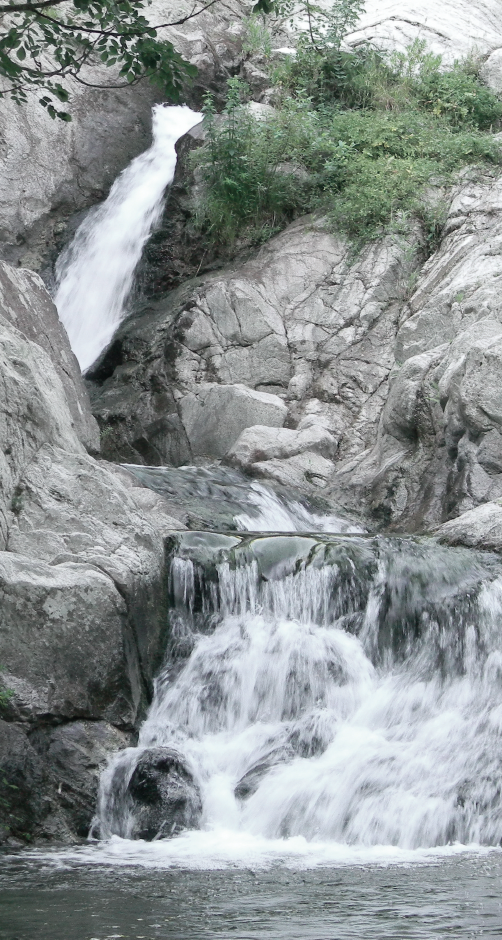

SILVER FIR
The silver fir is an evergreen, majestic, slender and long-lived tree. Being a relict of the last ice ages, it survives in southern Italy thanks to the microclimate of beech forests, which, especially when young, protect it from the glare of the summer sun. Given its considerable height, it was used as a mast for ships in the past, between the 15th and 18th centuries. The Calabrian silver fir is one of the most valuable ecotypes in Europe in terms of morphology, growth rates and, above all, its proven resistance to various adversities, including acid rain.
'CARBONAIA'
For centuries, one of the most important activities for the local economy was the production of charcoal through the imperfect burning of wood. Along the route we can observe the reconstruction, in miniature, of a charcoal pile (‘lu scarazzu’). These sheaves of wood formed by a central chimney and other lateral vents, used for the purpose of regulating the draught of air, gave rise to the low-oxygen conditions necessary to create charcoal.
'PIETRA DEL SIGNORE'
Natural balcony overlooking Serra San Bruno. A majestic example of the geological con-formation of this purely crystalline territory in which granites predominate, often surfacing in fascinating formations among the woods.
SPOTTED SALAMANDER
A cool and damp wooded environment, crossed by small streams, is the ideal habitat for this curious amphibian easily recognisable by its spotted colouring in which the yellow ones prevail over the black in the subspecies found in the centre-south. Its colours are used as a warning to predators, given the bad taste of this little animal due to the mucus that covers it and keeps its skin hydrated. It is a predominantly nocturnal amphibian; it only appears during the day when the weather is rainy and wet. It feeds on earthworms, insects and molluscs.
LUNGWORT
On our way, we will also be able to admire some rare species such as the lungwort (lobaria polmonaria), whose name is due to its shape, which partly resembles lung tissue. This lichen is an excellent bio-indicator of the effects of air pollution. Lobaria has a history of use in traditional medicine as an anti-inflammatory as well as being used to produce an orange pigment for dyeing wool and leather.
ROSARELLA BOTANICAL GARDEN
Tall silver fir trees enclose a beautiful area with a wide variety of plants. A walk will take us to admire this treasure trove of species together with a beautiful artificial pond fed by an irrigation channel, a small marshy area and two greenhouses complete the area.
